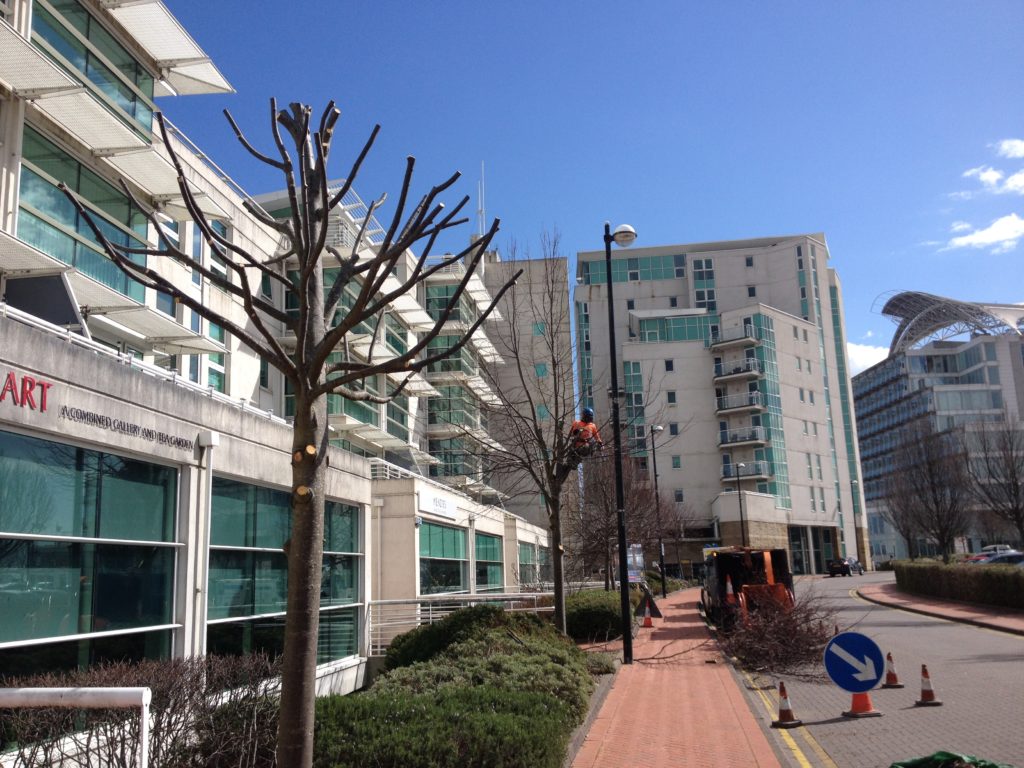
You can always find more than one way to do something and for many people, pollarding, reducing and topping a tree, are all one and the same thing.
However, as knowledgeable arborists, we know the difference between the three terms, and let me share that with you.
Pollarding is a method of pruning in which the upper branches of a tree are removed from a young age, forming pollard heads, promoting a dense head of foliage and branches. The method dates back to Ancient Rome when Propertius mentioned the practice in one of his books of Latin verse. Pollarding allows the wound to be kept small and therefore the tree to repair and include protecting against decay and limiting the energy lost through only a small amount of stored energy being removed at any one time. This allows a tree to be maintained at a pre-determined size throughout its lifecycle.
Reducing canopy size stresses the tree because of the cuts required. Indeed, over reduction can initiate decay in the trunk or branches, as well as causing the crown to thicken as the tree struggles to replace the lost energy. This is an acceptable practise when reducing weight, leverage and size with the aim of saving a tree with the potential for failure.
Topping is the indiscriminate cutting of removing whole tops of trees, creating large wounds that will struggle to heal, leaving stubs or lateral branches that are too small to assume the role of a dominant leader. Other common names for the practice include hat-racking, heading, rounding over, and tipping.
Many of our customers request topping or reduction when they feel that a tree has become too large for his or her property, or that tall trees may pose an unacceptable risk. Yet both of these methods cause anxiety and stress to the tree and can actually increase risk to the tree in the long term.
We would only recommend regular pollarding for your trees when they are young and as part of a carefully planned programme as this method is safer and less harmful to the plant. Pollarding will:
- Prevent trees and shrubs outgrowing their allotted space
- Reduce the shade cast by a tree
- Be necessary on street trees to prevent house windows, electric wires and streetlights being obstructed
Lime trees, such as these which we pollarded at Sovereign Quay in Cardiff, respond well to pollarding, as do ash, elm, elder, gum, London plane, oak, some species of acer and the tulip tree. The reason for suggesting this management of these limes was due to the nature of the site, where a line of young limes planted in front of residential windows were starting to block the views and restrict light that would otherwise be available.
Our solution made perfect sense.